#protists
Text
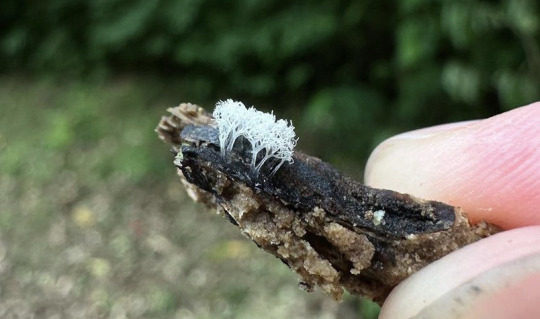

Ceratiomyxa fruticulosa var. arbuscula by Eric Cho
‘arbuscula’ means shrub-like !
#ceratiomyxa#ceratiomyxa fruticulosa#ceratiomyxa fruticulosa var. arbuscula#eric cho#myxomycota#slime mold#slime mould#myxomycetes#macro#macro photography#microbiota#microorganisms#microbiology#nature photography#forestcore#forest photography#protists#eukaryotes#fungi#mycology
2K notes
·
View notes
Text


microscope life drawings - tardigrade and colony of Vorticella ciliates.
#animal art#microscopy#microscope#ciliate#vorticella#life drawing#sketch#tardigrade#water bear#pencil#drawing#studies#artists on tumblr#traditional art#protist#protists#microorganisms
849 notes
·
View notes
Text

Diophrys appendiculata. A single-celled marine organism covered in hair-like structures. Fauna of Chilka Lake. 1995.
Internet Archive
85 notes
·
View notes
Text

Smothered, Pasted, Powdered
Jacquard weaving, chalk pigments, acrylic primer, clear gesso, used screenprinting frame
56 notes
·
View notes
Text
Scientists testing a new method of sequencing single cells have unexpectedly changed our understanding of the rules of genetics.
The genome of a protist has revealed a seemingly unique divergence in the DNA code signaling the end of a gene, suggesting the need for further research to better understand this group of diverse organisms.
Dr. Jamie McGowan, a postdoctoral scientist at the Earlham Institute, analyzed the genome sequence of a microscopic organism—a protist—isolated from a freshwater pond at Oxford University Parks. The research was published in PLoS Genetics.
Continue Reading.
61 notes
·
View notes
Text
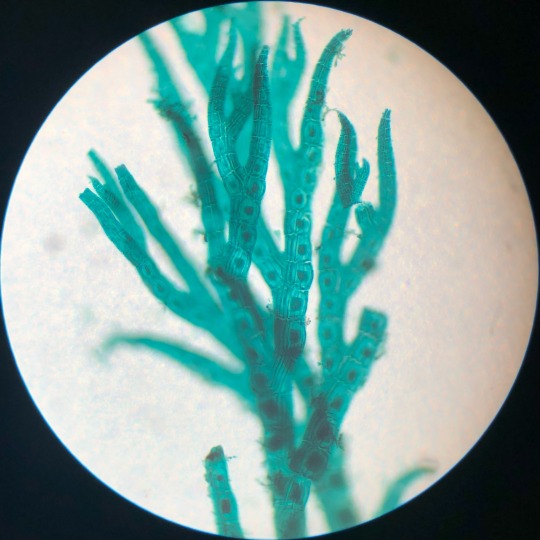
a photo of a rhondrophyta tetrasporophyte under a microscope from my botany class <3
269 notes
·
View notes
Text
The ending of supernatural is sooooo good for people deconstructing from the church. Soooo cathartic. Yeah, fuck you god. Fuck off.
#supernatural#spn#dean winchester#sam winchester#castiel#jack winchester#god#christianity#organized religion#Catholic#protists
21 notes
·
View notes
Text

Well, I got so carried away by writing The Everyday Naturalist manuscript tonight that I didn't even realize that it was coming up on midnight. In spite of the fact that I didn't get started until around 6pm after all my various other errands, tasks, and so forth were done, I managed to knock out 3,232 words. The chapter on slime molds, lichens, and other oddities is almost done, and the manuscript now stands at 52,582. My plans for heading to Portland have been put on hold at least until things thaw out in the mountains, so I'm sticking around home tomorrow and giving myself another dedicated writing day.
In the meantime, here: have a photo of some nifty chocolate tube slime molds (Stemonitis splendens.)
#slime mold#slime molds#Myxogastria#Myxomycetes#macro photography#biology#protists#nature#nature identification#nonfiction#books#writing a book#authors of tumblr#ecology#environment
25 notes
·
View notes
Text
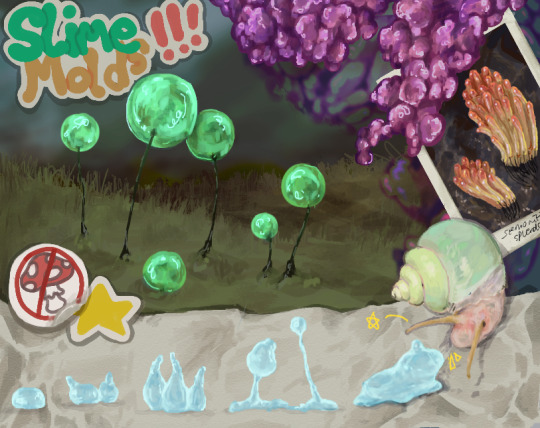
slime mold appreciation art !! (ft. snail)
73 notes
·
View notes
Text
Bdelloid rotifer eating
This little animal uses its ciliae rings to aspire water, then it grinds it with its mastax organ. It mostly eats organic detritus and other microorganisms.
#rotifer#bdelloid#rotifera#bdelloidae#microorganisms#microbiome#microscopic life#microbiology#microscope#little animals#biology#protists
249 notes
·
View notes
Text

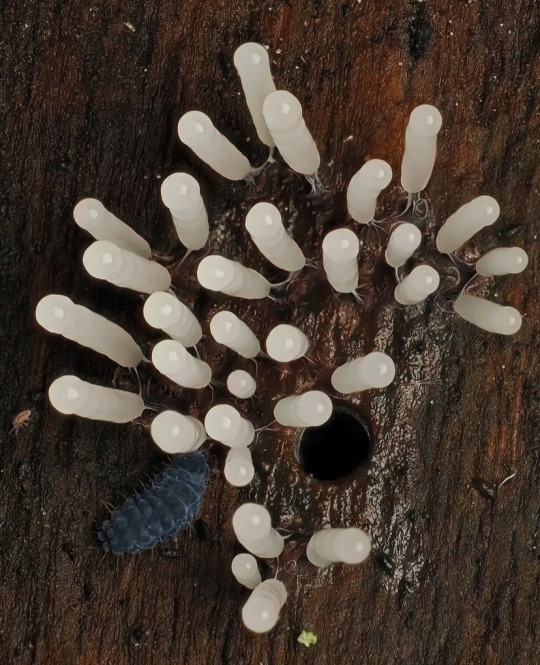


a springtail slime mold buffet !!
by Jamie Rosencrans
#stemonitopsis#springtail#springtails#collembola#jamie rosencrans#myxomycota#slime mold#slime mould#myxomycology#mycology#ecology#entomology#insects#bugs#forest floor#myxomycetes#forestcore#macro photography#protists#microbiota#fungi#nature photography#biology#microbiology
2K notes
·
View notes
Text


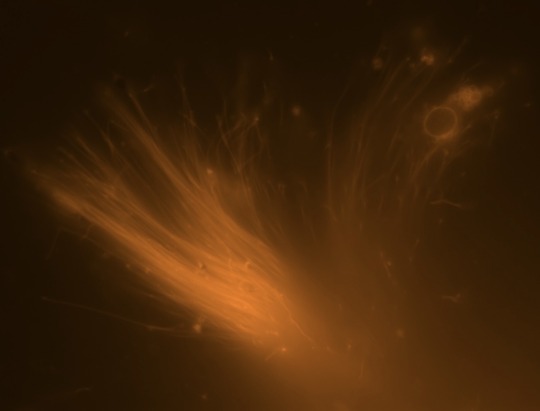
Satellite footage of sun bursts A single-celled organism (Staurojoenina assimilis) stained with flagella and cell-surface dye.
The hindguts of termites (where you can find these protists) are jam-packed with life, though perhaps a little too much life. Trying to separate out the DNA from a species without contaminant DNA getting in the way is a difficult task, and can sometimes lead to misleading results. Dyes like these could be used alongside a machine called a flow cytometer to separate out different cells, and hopefully obtain a clean "pool" of just one species (out of many).
Not too useful for Staurojoenina, which at a (relatively) whopping 130 micrometers is easy to manually collect. Here it is without the dye:
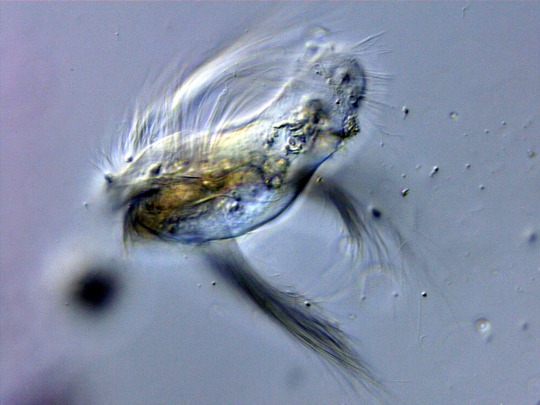
but certainly useful for protist species such as Tricercomitus divergens, which at 2-5 micrometers are often dwarfed by its bacterial neighbors:

There's actually two of them in this photo, believe it or not. I'll give you a hint- they are smaller than the squiggly lines (which are bacteria)

It's crazy to think that a eukaryotic cell, complete with a nucleus and organelles, can be smaller than a bacterial cell! Well, ignoring the freakishly large bacteria.
#protists#microscopy#also hmu if you run a protist fandom blog#or an invertebrate fandom blog#i want to follow more people#no discourse tho sorry#unless its taxonomic discourse#which is the best kind
59 notes
·
View notes
Text


small friend thoughts
7 notes
·
View notes
Text
Minorisa, a group of unicellular eukaryotes (protists), is renowned as one of the smallest predators in the world. These microorganisms are widely distributed in oceans, with a particular abundance in coastal regions, where they are believed to play a crucial role in marine ecosystems.
Moreover, their close association with chlorarachnion algae, possessing plastids, makes Minorisa essential for understanding how chlorarachnion algae acquired plastids. Nevertheless, until now, only one species, Minorisa minuta, had been formally described, and the absence of available culture strains hindered taxonomic investigations.
Continue Reading.
43 notes
·
View notes
Text
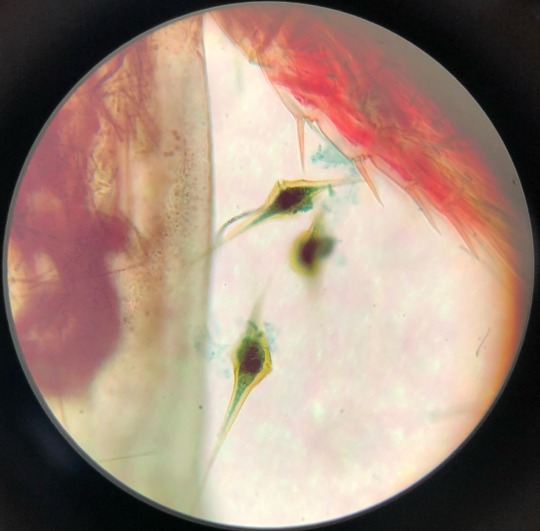
some dynophyta under a microscope! and some dynophyta fun facts:
dynophyta have cellulosic plates, called theca, that act as a protective layer for the cell
there’s a groove between the theca along the “waist” of the cell (girdle groove) and a groove between the theca on the end of the cell (trailing groove)
they have flagella in the grooves that allow this protist to be mobile
114 notes
·
View notes
